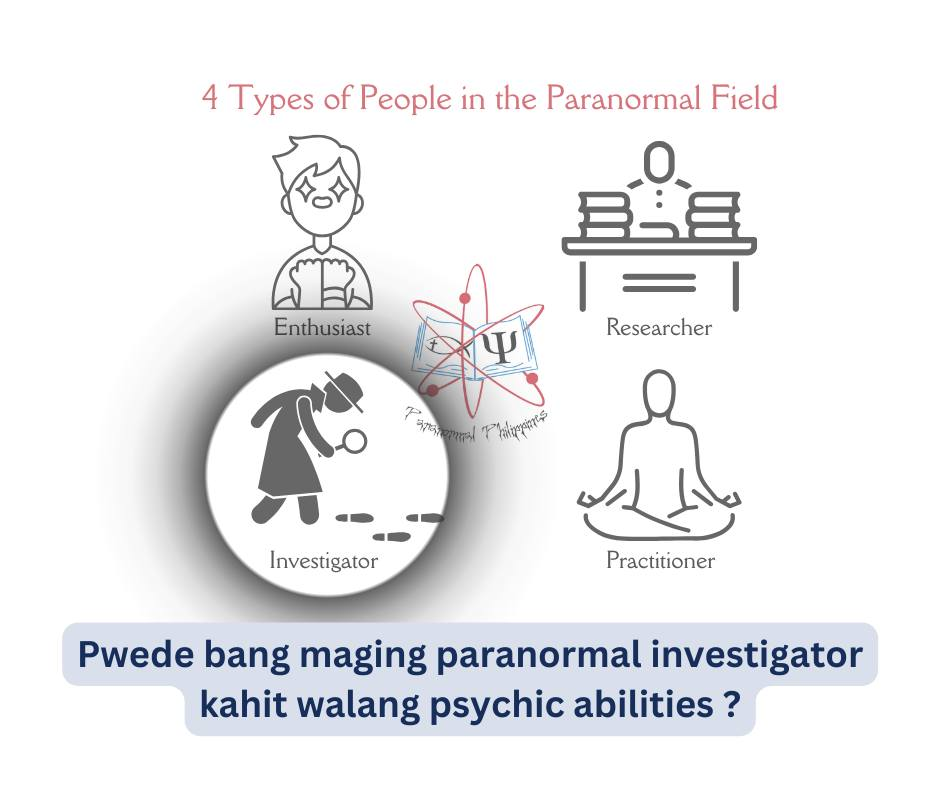Detailed Historical Research
This process of historical research is inspired by Alex Matsuo, founder of the Association of Paranormal Study (APS), and her approach is thoroughly discussed in her book, More than Ghosts: A Guide to Working Residential Cases in the Paranormal Field. I highly recommend reading it—her insights are an invaluable resource for anyone serious about paranormal investigations.
Begin Broad → Narrow Down
Think of research like zooming in with a camera: start wide, then focus on the specifics. In the U.S., you might go state → county → town. In the Philippines, it’s similar, just using our own political and cultural divisions:
1. Major Island Group
Start with Luzon, Visayas, or Mindanao.
Look for general historical events affecting the region: wars, colonization periods, natural disasters, epidemics, major migrations.
Check broad cultural and folklore patterns: myths, spirits, legends specific to the region.
Why this matters: You get context for the general vibe of the area—some spirits or legends are regional, not just local.
2. Province
Archives: provincial libraries, provincial capitol, local historians.
Look for:
Land grants during Spanish, American, or Japanese periods.
Provincial disasters (fires, floods, typhoons, earthquakes).
Notable families or historical figures.
Optional: connect with provincial museums or heritage centers—they often hold old maps and documents.
Why this matters: Now you start seeing how the land evolved politically, socially, and physically—gives clues about long-term human activity that could influence hauntings.
3. City / Municipality
Archives: municipal hall, local library, historical committees.
Look for:
Tax declarations, building permits, zoning changes.
Local tragedies, accidents, or crimes reported.
Population growth, migration trends, and urban legends.
Talk to long-time residents—they often remember the small details official records don’t capture.
Why this matters: You’re connecting regional history to the exact location, finding patterns or events that might explain why a place is “charged” energetically.
4. Barangay / Neighborhood / Sitio
Archives: Barangay Hall, barangay captains/secretaries, local elders.
Look for:
Land disputes, transfers, or notable families.
Oral history: “kwentong bayan,” unexplained incidents, folk tales.
Past structures that no longer exist, old cemeteries, or community gathering spots.
Why this matters: This is the ground zero layer—where oral histories, land changes, and local lore intersect. Most hauntings manifest at this micro level.
5. Church / Parish Layer
Many older Filipino towns revolve around a church.
Check parish records: baptisms, marriages, burials.
Look for families tied to the property, unusual events, or past clergy accounts; religious relics
Why this matters: Church records are often the most reliable for genealogical research and can reveal histories missing from government archives.
Putting it Together
Start broad (Island Group → Province), gather context, then narrow to City/Municipality, Barangay, and the specific site.
Mix documents + oral accounts at every level.
Keep a timeline: the broader you go, the more you can see patterns emerge over decades or even centuries.
Historical Site Research Checklist
This is a checklist if you want to start broad and then narrow it down.
1️⃣ Major Island Group (Luzon / Visayas / Mindanao)
Identify the island group
Note major historical events affecting the region (wars, colonization, disasters)
Record regional folklore and legends relevant to the area
2️⃣ Province
Provincial archives checked
Provincial library visited
Historical societies / local historians contacted
Land grants, property histories, and old maps collected
Provincial disasters (fires, floods, earthquakes, typhoons) noted
Notable families, figures, or events documented
3️⃣ City / Municipality
Municipal hall / local government records checked
Local library visited
Tax declarations and building permits collected
Urban legends, local ghost stories, or folklore noted
Population history (growth, migration) studied
Accidents, crimes, or tragedies recorded
Festivals/traditions
4️⃣ Barangay / Neighborhood / Sitio
Barangay hall / captain / secretary consulted
Barangay resolutions, records, and/or census reviewed
Oral histories from elders/ kwentong bayan collected
Land disputes, property transfers, notable families recorded
Past structures, cemeteries, or important landmarks noted
5️⃣ Church / Parish Layer
Parish priest / church secretary consulted
Baptism, marriage, and burial records reviewed
Cemetery visits (if applicable)
Past clergy or parishioners’ accounts noted
Historical church events (fires, renovations, disasters) recorded
Religious relics tied to the land
6️⃣ Additional Tips / Notes
Start broad → zoom in → specific site
Combine document research + oral accounts at every level
Build a timeline of events affecting the location
Respect privacy and cultural sensitivities
Cross-reference data whenever possible
(Haunted Highway investigation conducted by Ms. Gabriella of Paranormal Philippines)
More information:
Preparing for a Paranormal Investigation
- C.E.



Comments
Post a Comment